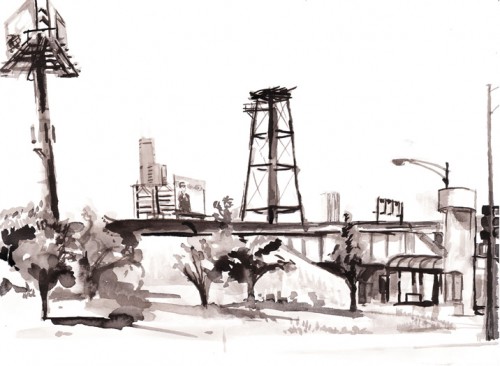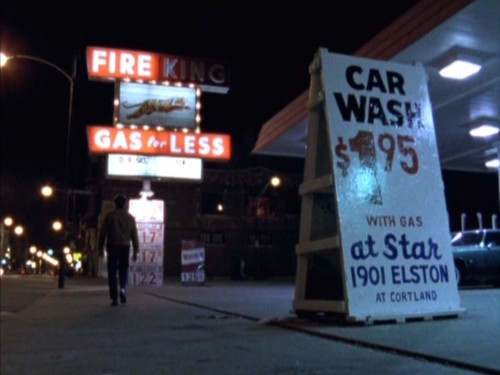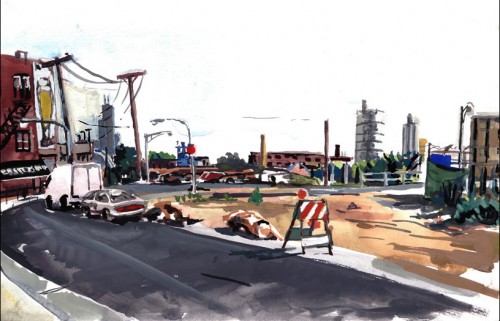I never tire of looking at this city. Despite the stories I’ve been able to wring out of it, driving a taxi is mostly drudgery, so having the views I have let my mind go places even when it feels like I’m going nowhere. I’m not the only one either. Chicago has that effect on a lot of people. In the last few years some sites have sprung up that document the city’s past in one way or another. Calumet 412 and Chicago Past share archival photographs and other ephemera, occasionally going back to before The Fire. I seem to spend time every day lately re-posting pictures that these two dig up. Sometimes it’s frustrating when images are posted with no proper attribution but that’s an endemic problem to much of the internet. Who actually made what isn’t of much import to most these days. These images are passed around and around and around—eventually becoming a sort of visual game of broken telephone—with captions and comments added, edited, and subtracted along the way. Despite this, when the picture is of a place you know in some way, it retains its magnetic pull.
It’s not nostalgia that draws me to old pictures of Chicago, it’s more that—having trod those same streets so many times—seeing how they used to be connects me to them all the more. My friend, Noah Vaughn, started Chicago Screenshots to document how this town has been portrayed in the movies over the years. By focusing on the backgrounds and the built environment rather than the actors, he’s able to put us in these still frames in a way the filmmakers never did. Most of us don’t spend our days as stars of what we survey but rather as bit players or just part of the scenery. Movies often trade in a magical unreality but Vaughn’s work emphasizes the places from which the fantasies spring; these places are the everyday ones in which most of us live.
When I saw The Interrupters last year the thing that moved me almost as much as the stories of people being walked back from the edge, was that I’ve been through so many of places where the film is set. I wasn’t in those gangs and I don’t live in Englewood, Little Village, or Roseland, but I’ve driven people to and from all these places many times. I have stories that take place there. When you know the physical place where a tragedy occurs it makes it that much more real. It’s no longer an abstraction when you’ve actually been there. Most movies take us far away from the everyday, this one brings it up close.
Last night I saw Andrew Davis’s Stony Island. In the Q & A that followed the screening, an older woman thanked the filmmaker for bringing back so many memories, of showing how Chicago used to be. To me though, the ‘70s Chicago it showed was the same Chicago I see on the archival sites mentioned above, the same one that Vaughn freezes in his screenshots, and the same one I see out the windows of my cab every day.
The cars aren’t as cool, a lot of the old buildings are gone—with new, often uglier ones taking their place—but it’s still the same place to me. The one I learned about from Nelson Algren years before I ever got here, the city I can’t imagine ever leaving.








Pingback: Words and Pictures for Other Places | Art in its Own Terms